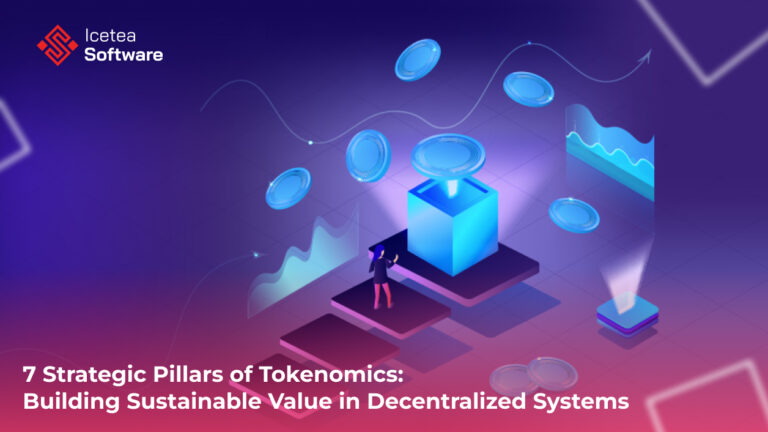Trust the Code or Trust the Server? Exploring On-Chain vs Off-Chain Games
The blockchain revolution has given rise to a new era in gaming—Web3 games—where players can own, trade, and monetize their in-game assets. But within this ecosystem lies a critical architectural choice that affects performance, trust, and gameplay experience: Should your game be on-chain, off-chain, or somewhere in between? Defining the Terms: What Is On-Chain vs…
The blockchain revolution has given rise to a new era in gaming—Web3 games—where players can own, trade, and monetize their in-game assets. But within this ecosystem lies a critical architectural choice that affects performance, trust, and gameplay experience: Should your game be on-chain, off-chain, or somewhere in between?
Defining the Terms: What Is On-Chain vs Off-Chain in Gaming?
On-Chain Games
An on-chain game is one where the game logic, mechanics, and asset states are hosted entirely (or almost entirely) on the blockchain. Every action—whether it’s a move in a strategy game or the result of a battle—is recorded on-chain via smart contracts. This architecture aligns closely with Web3’s core principles: transparency, decentralization, and immutability.
Notable examples:
- Dark Forest (a zk-SNARK-based space strategy game)
- Loot (for Adventurers) derivatives
- Dojo-powered Starknet games on Ethereum Layer 2
Off-Chain Games
Off-chain games, on the other hand, function like traditional games. Most gameplay, interactions, and logic are handled on centralized servers. Blockchain is used selectively—often for asset ownership, token economies, or marketplaces.
Popular examples:
- Axie Infinity (game logic off-chain, NFTs on-chain)
- Gods Unchained (off-chain gameplay, NFT cards on-chain)
- The Sandbox (game creation off-chain, land/NFTs on-chain)
Pros and Cons of On-Chain Games
| Pros | Cons |
| True Ownership and Transparency Every interaction is verifiable. Players can audit smart contracts to understand exactly how the game works and know with certainty that no central party can manipulate outcomes. Composability and Modding On-chain games are like open-source playgrounds. Developers can build additional layers, interfaces, or tools on top of existing games, much like how DeFi apps integrate with each other. Censorship Resistance Since the game lives entirely on-chain, it can’t be taken down or altered by a single authority. The game “exists” as long as the blockchain it’s built on remains active. | High Costs and Latency Every action (e.g., attack, move, craft) requires a blockchain transaction. This introduces gas fees, delays, and complexity—especially on congested chains. UX Challenges Players must frequently interact with wallets and wait for block confirmations, which can break immersion and create friction. Limited Game Design Complexity Due to technical and financial constraints, building expansive 3D environments or real-time multiplayer games on-chain is currently unfeasible. |
On-chain games represent a bold reimagining of what digital gaming can be—transparent, decentralized, and truly owned by the players. The ability to verify every move, control in-game assets without reliance on a central authority, and build freely on top of existing game logic offers unprecedented freedom for both developers and communities.
However, these advantages come with significant trade-offs. High costs, slow transaction times, and limited scalability currently hinder the ability to deliver fast-paced, immersive experiences that gamers are used to. User onboarding remains a challenge, and technical limitations restrict the types of games that can thrive fully on-chain.
For now, on-chain games are best suited for experimental, strategic, or turn-based formats where transparency and ownership matter most. But as blockchain infrastructure evolves—with innovations like Layer 2 scaling, zk-rollups, and modular chains—many of today’s constraints will gradually disappear.
In the long run, on-chain gaming has the potential to redefine player-agency and reshape how digital worlds are created, governed, and sustained. The key lies in finding the right balance between decentralization and usability, and in recognizing that on-chain is not just a technical decision—but a philosophical one.
Pros and Cons of Off-Chain Games
| Pros | Cons |
| Faster, Smoother Gameplay Without the need for blockchain interaction at every step, off-chain games can deliver real-time responsiveness, rich graphics, and seamless multiplayer experiences. Scalable Architecture Developers have full control over the tech stack, enabling easier implementation of complex systems like AI opponents, real-world physics, or advanced matchmaking. Easier Player Onboarding Players don’t need to manage wallets or pay gas fees for every move. Web2-like login systems and free-to-play mechanics can lower barriers to entry. | Centralized Control Even if players “own” NFTs, the game company still controls the rules, logic, and game world. If the server shuts down, the game disappears. Lack of Transparency Game logic is typically closed-source, meaning players have to trust the developers to act fairly—reintroducing many of the same issues Web3 aims to solve. Limited Interoperability Since game data is stored off-chain, it’s harder for other developers or protocols to build extensions, interfaces, or integrations. |
Off-chain games offer what most players expect today: smooth, responsive gameplay, visually rich environments, and a frictionless onboarding experience. By keeping game logic and rendering on traditional servers, developers can fully optimize performance, scalability, and design complexity without being limited by blockchain infrastructure. This makes off-chain gaming the more practical choice for delivering fast-paced, immersive, and commercially viable titles—especially to mainstream audiences.
However, this convenience comes at the cost of decentralization. While assets like NFTs may live on the blockchain, the core gameplay remains under centralized control. Players must trust that developers will uphold fair rules, protect their progress, and maintain long-term access. Additionally, the closed nature of off-chain architecture limits transparency and restricts composability across ecosystems—core values that define the Web3 vision.
In essence, off-chain games are not inherently flawed—they’re often necessary. But for Web3 gaming to truly evolve, developers must find creative ways to combine the strengths of off-chain performance with the principles of on-chain ownership, openness, and transparency. The future of gaming may not lie in choosing one over the other, but in blending both to deliver games that are not only fun to play—but fair, open, and player-first at their core.
Hybrid Approach: The Middle Ground
Most current Web3 games opt for a hybrid architecture, combining off-chain gameplay with on-chain asset ownership. This model enables:
- Smooth UX for players
- Blockchain benefits like asset ownership, interoperability, and DeFi integration
- Room for innovation without overwhelming technical complexity
For example:
- Axie Infinity stores monsters and land on-chain but handles battles off-chain.
- Illuvium plans to run high-quality Unreal Engine gameplay off-chain, while keeping the asset economy and governance on-chain.
Choosing the Right Model: What Should Developers and Players Consider?
- Gameplay Complexity: Real-time shooters or RPGs may benefit from off-chain or hybrid setups, while turn-based strategy or text-based games can explore full on-chain logic.
- Audience and Accessibility: Casual gamers may prefer the ease of off-chain systems, while crypto-native players might appreciate full on-chain sovereignty.
- Longevity and Openness: Games that prioritize community contribution, modding, and decentralization should explore more on-chain components.
Final Thoughts: Building the Future of Web3 Gaming with Purpose
At Icetea Software, we believe the debate between on-chain and off-chain gaming is not about choosing sides—it’s about choosing wisely. Each model offers distinct advantages, and the most meaningful innovation happens when we apply the right technology to the right problem.
On-chain games embody the core ideals of Web3: decentralization, transparency, and community empowerment. They unlock powerful new paradigms—where players become co-creators, assets gain permanence, and ecosystems evolve beyond the control of any single party. Yet, we recognize that the infrastructure is still maturing, and fully on-chain games today remain exploratory and limited by cost, latency, and scalability.
Off-chain games, in contrast, allow us to deliver polished, high-performance experiences that appeal to global audiences—without compromising gameplay. They provide the accessibility and UX that mainstream users expect, while serving as a gateway to introduce Web3 values. However, their centralized nature means true player ownership and composability are often diluted unless implemented thoughtfully.
That’s why our vision lies in hybrid architecture—games that leverage blockchain where it truly adds value (ownership, governance, interoperability), while relying on proven off-chain systems for gameplay performance, scalability, and design freedom. As zero-knowledge proofs, Layer 2s, and modular chains evolve, we’re preparing for a future where on-chain and off-chain technologies can converge seamlessly.
————————–
𝗜𝗰𝗲𝘁𝗲𝗮 𝗦𝗼𝗳𝘁𝘄𝗮𝗿𝗲 – Exploring On-Chain vs Off-Chain Games!
Website: iceteasoftware.com
LinkedIn: linkedin.com/company/iceteasoftware
Facebook: Icetea Software





